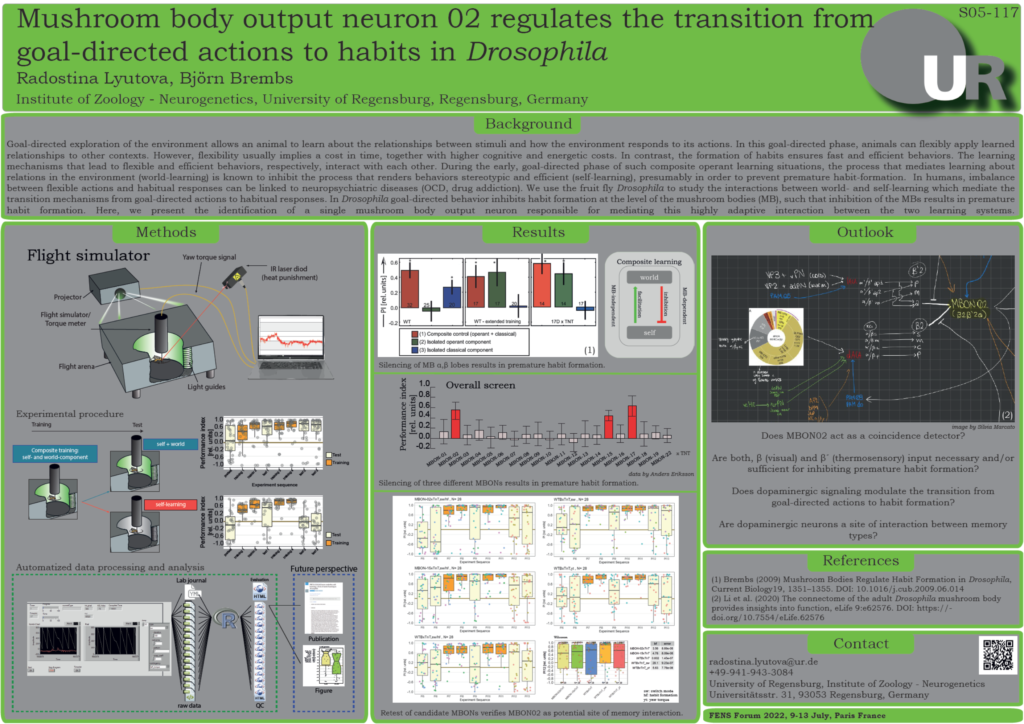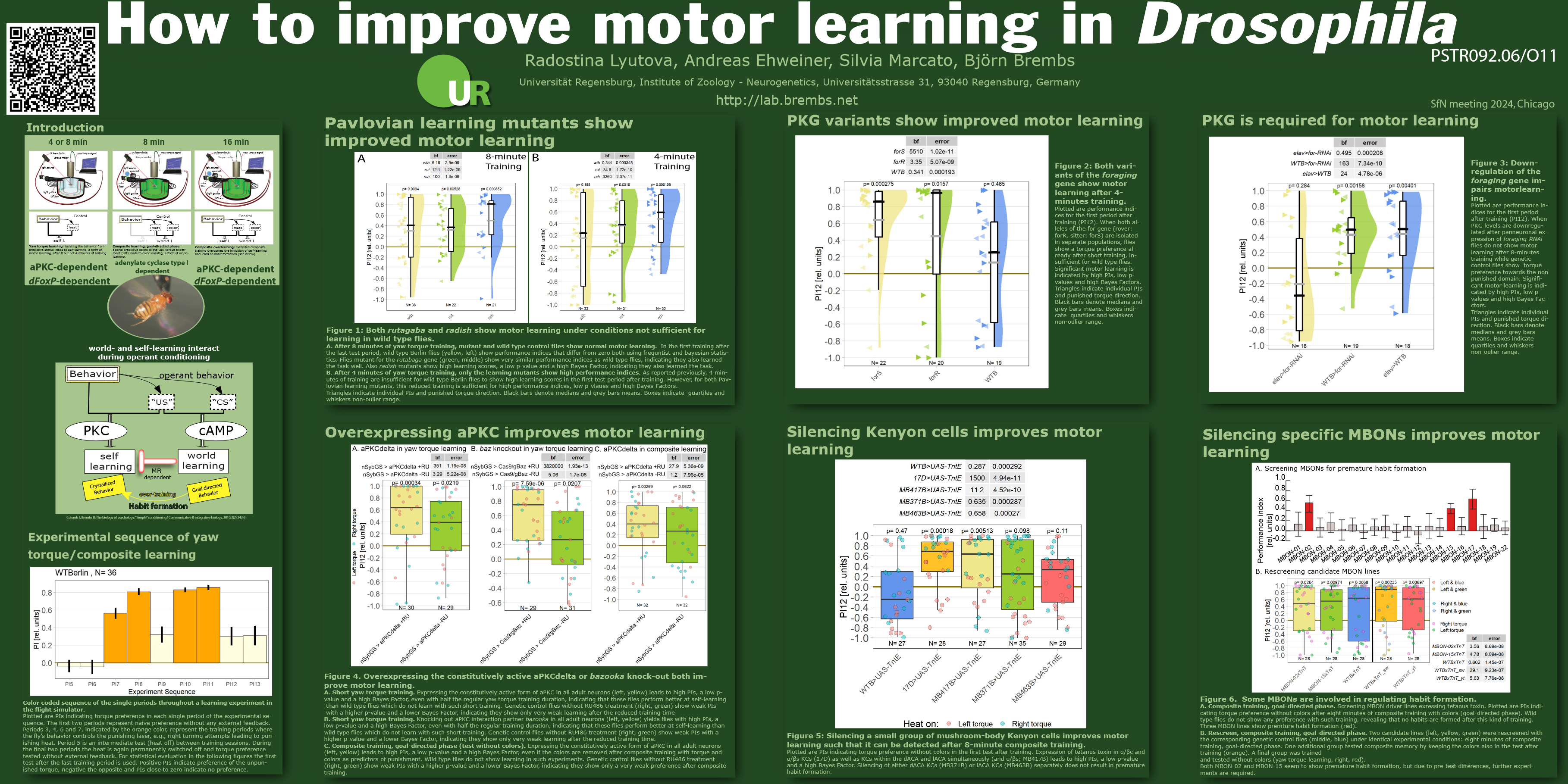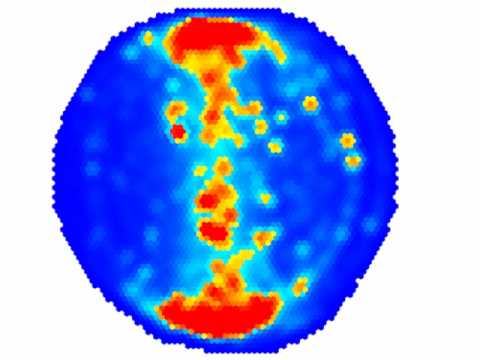The first conference after the Sars CoV2 pandemic! We’re headed for Paris, France tomorrow and our lab will present two posters, the work of graduate student Andreas Ehweiner and postdoc Radostina Lyutova.
Andreas has been working on the cellular and genetic mechanisms underlying operant self-learning (a form of motor learning). On his poster, he presents evidence that one crucial site of plasticity for this type of motor learning is motor neurons of the fly ventral nerve cord co-expressing both FoxP and aPKC. Interestingly, FoxP expression in the brain seems to be dispensable for self-learning and knocking-out FoxP in all neurons in the adult only seems to show an effect on learning 14 days after the knock-out. Overexpressing a constitutively active form of aPKC improves motor learning, such that these flies still learn when training has been reduced to a level where wild-type flies no longer show a significant learning score. I’m particularly happy that we now seem to have found which of the five Drosophila PKC genes is involved in operant self-learning. We had been trying to identify the right PKC for a few years now. Surprisingly, it is not the same PKC as the one that is required for self-learning in Aplysia, for instance. Andreas is writing up his thesis at the moment, so he sure would appreciate job offers. Andreas is smart, resourceful and persistent. Here is his poster (link opens A0 PDF):

Radostina studies the regulation of self-learning by other forms of learning. Operant self-learning only requires eight minutes of training (see Andreas’ poster) when no other stimuli can be learned. If such stimuli are present, self-learning requires overtraining of 16 minutes. This procedure is reminiscent of habit formation in vertebrates. Radostina found that habit formation in flies is regulated by a single cell receiving input from a prominent insect neuropil, the mushroom body. If she inhibits this cell, flies show a habit already after eight minutes, suggesting that the inhibition of self-learning is mediated via this mushroom body output neuron (MBON 02). Connectome analysis revealed that MBON 02 input is provided mainly by Kenyon cells from the little-studied lateral and dorsal accessory calyx, which, in turn, receive thermosensory and visual input, respectively. This has been a massive effort over several years, clouded by a case of sabotage, that Radostina has picked up and breathed new life into. Here is her poster:
















